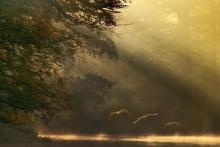 Wydawca treści
Wydawca treści
PLACES AND OBJECTS
 Leśnictwo Dąbrowa, fot. Jerzy Malicki
Leśnictwo Dąbrowa, fot. Jerzy Malicki
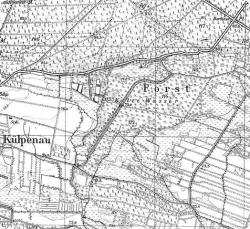 Mapa topo.jpg
Mapa topo.jpg
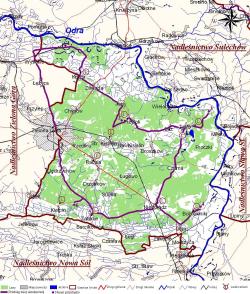 Mapa trasy - duża.jpg
Mapa trasy - duża.jpg
 Została nam tylko tablica informacyjna, fot. Archiwum Nadleśnictwa Przytok
Została nam tylko tablica informacyjna, fot. Archiwum Nadleśnictwa Przytok
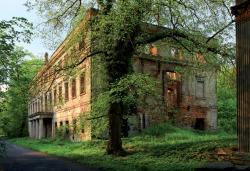 Park w Zatoniu, fot. Krzysztof Moroz
Park w Zatoniu, fot. Krzysztof Moroz
 Bukowa Góra Śląska - Ochla, fot. Jerzy Malicki
Bukowa Góra Śląska - Ochla, fot. Jerzy Malicki
 Leśnictwo Dąbrowa, fot. Jerzy Malicki
Leśnictwo Dąbrowa, fot. Jerzy Malicki
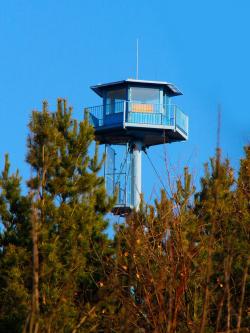 Dostrzegalnia przeciwpożarowa, fot. Jerzy Malicki
Dostrzegalnia przeciwpożarowa, fot. Jerzy Malicki
 IMG_5889.jpg
IMG_5889.jpg
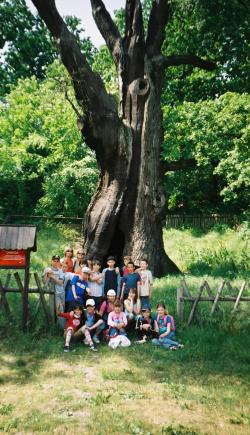 Napoleon przed podpaleniem, fot. Archiwum Nadleśnictwa Przytok
Napoleon przed podpaleniem, fot. Archiwum Nadleśnictwa Przytok
Coach tour direction running through the most interesting places of the Forest District Przytok
Stops:
- The Forest Rangers Area Dąbrowa.
- Fire Tower.
- Obelisk sacrificed to the burnt natural monument – European oak Napoleon.
- Nature Reserve „Bukowa Góra".
- Park in Zatonie.
- Nature Reserve „Zimna Woda".
Stop No. 1 - The Forest Rangers Area Dąbrowa.
Travel route – about 16 km – the road from Zielona Góra towards the village of Wysokie, after passing by the level crossing, then the turn to the right towards State Agricultural Farm (PGR) Wóciki, the crossing through the Forest Rangers Area; then along the fire road no.1 leading towards the road to the village Krępa.
The forest of the Forest Rangers Area Dąbrowa, called Odrzańskie Forests, are undoubtedly "the pearl" of the Forest District Przytok. Initially, they belonged to the Duke Henry IX, who in 1429 sold his estate to the city of Zielona Góra. In the half of the XIX century the Odrzański Forest became very busy recreation place. With its mature forests, channels and trails, it was the most popular place of relaxation for the former townspeople. There were created walking alleys, relaxation facilities, roadside market stalls. There were also 2 inns, one by the road leading from the village Krępa to the River Odra; the second one, on the other hand, was located by Zimny Potok (stream) nearby the village Mała Krępa. In 1945 both inns were burnt.
The forests didn't lose anything from its charm and nowadays they form the enclave of deciduous forest stands among coniferous forest sites. Visiting the forest of the Forest Rangers Area Dąbrowa, one can come across many representatives of the animal world, including protected species (mute swan, black stork, crane, European pond turtle) and hunting game (wild boar, deer).

Stop No. 2 - Fire Tower.
Travel route - about 15 km – from the Forest Rangers Area Dąbrowa along the road towards the villages Zawada and Jany. In Jany, the turning to the right towards the village Stary Kisielin, the turn to the left in the village Przytok direction. The fire tower is on the left side of the road.
During the period of the highest fire hazard (from early spring to autumn)forest areas are constantly monitored. Early noticed fumes, give the chance to extinguish the fire. The monitoring and observation of the forest are done, among others, from the fire towers.
In the Forest district Przytok, there are 2 Fire Towers made of steel. From dawn till dusk, the observers keep watch on Fire Towers, equipped with binoculars, maps and radiotelephones. When they notice smoke, they localize it and immediately pass on information to a duty officer in the forest District, who sends the radio patrol and fire car to the place of the fire, and in case of necessity, Fire Brigade Units. The forest observation is also carried on from planes and helicopters, which if necessary, help in the fire fighting.

Stop No. 3 - Obelisk sacrificed to the burnt natural monument – European oak Napoleon.
Travel route - about 12 km – from Przytok, through the village Łaz, towards Zabór; then directing towards Milsk. After passing by Zabór the turn to the left into the forest fire road no. 5, then on the second crossing of the forest roads, the turning to the right and further along the fire road no. 5.
It was the thickest oak in Poland - the perimeter measured perpendicularly to the axis, at the height of 1,30 m from the highest point of the tree basis, equals 1052 cm, and its height -22 m. It was estimated to be about 660 years old.
The oak was protected already before the Second World War. In the book of nature conservation of Zielona Góra County, it was entered under the number 61. In 1920 The Duchess Hermina von Schonaich-Carolath gave the oak name of the well-known nature scientist Teodor Schube. At the turn of 70-ies and 80-ies of the XX century, excavated the plaque under the oak, where there was written down in German, that the oak of Teodor Schube is the thickest oak in the Silesia Province and its perimeter equals 10,5 m.
In 1966 "Napoleon" was admitted to be the natural monument and entered into the register of natural monuments of the Lubuskie Province under the number 7 (Resolution of the Presidium of National Council (PWRN) no. 86/66). The current name of the tree arose from the legend telling, that during the invasion on Russia in 1812, after crossing the River Odra, Napoleon Bonaparte was relaxing under the tree. In 1925, the tree was set on fire. It was saved by coming from Zabór – the nature conservation officer Bannert. The whole was filled with concrete. The protective filling was removed in 1985 and at the same time tree conservation was carried on. Subsequent conservations were done in 1996, 1998 and in 2003. The works were mainly based on cutting out rotten branches and protecting the trunk from inside and outside with special fungicides. Additionally, in order to lighten the tree, improve its statistics and protect against breaks, there was performed the tying of "cobra" type.
On May 30, 2004, there happened the next fire of "Napoleon". The fire fighting action lasted from 9 a.m. to 4 p.m.
In 2006, the conservation of tree was performed to remove the traces of the from 2004. On November 15, 2010, as the result of the fire, there was destroyed the thickest oak in Poland "Napoleon". It was a kind of representative of the Forest District Przytok and the whole Lubuskie Province.
On December 1, 2012, City Council of Zabór signed the regulation no. I/4/10 on abolition of the status of the natural monument - oak "Napoleon".
On November 6, 2012, there took place the ceremonial planting of the "Napoleon" offspring – the sapling cultivated in arboretum in Sardomia (the Forest District Syców) from the cuttings taken from the burnt natural monument. There also took place the unveiling of the commemorative stone (obelisk) with the written history of the burnt oak.

Photo of Napoleon before arson, photo Archive of the Forest District Przytok

Commemorative stone with the history of the burnt oak.
Stop No. 4 - Nature Reserve „Bukowa Góra".
Travel route – about 20 km – from the obelisk dedicated to the burnt natural monument – European oak "Napoleon", the return – the road to Zabór, then the way towards the village Bobrowniki through the villages Czarna and Niedoradz. From Bobrowniki directing towards the River Odra.
The nature reserve was established in 1945, in order to sustain the tree stand , that was to be maintained due to educational and esthetical features, and due to specific characteristics of the forest stand similar to the natural one, at the same time covering the steep slopes.
The main forest-forming tree species is beech. It creates quite dense, tall and straight, beech forest with a small age range, with a slight share of oak, larch and pine.
These features and traces of raw and contour of the beech arrangement, more vivid at the bottom, could testify unnatural origin. Just the slope of the hill is covered mostly with pine, but the further parts of the slopes are overgrown with oak, forming the forest stand of very diversified age range, with predominating loose form of density. That is the part of the forest stand, which has got characteristics of the natural forest stand.

Stop No. 5 – Park in Zatonie.
Travel route - about 16 km - from Bobrowniki towards Niedoradz, then in Niedoradz the turn on the left directing towards Zatonie.
The park is registered as historical monument under the number 1747, and covers about 44 ha of the forest area. There runs the tilia alley through the centre. Within the area of the park, there are located the remaining of the palace and the orangery.
1n 1689, Baltazar von Unruh built the stone manor-house. It was two floor building built on the rectangular plan, covered with the hipped roof with mansards.
The last from the family Unruh in Zatonie was Jan Fryderyk, who died in 1757. After his death Zatonie became the property of Ferdynand Boguchwał von Scopp from Przecław, who in 1771 sold it to the Countess von Cosel. After her death, for Zatonie, there started the time of estate owners changes, which happened quite often. It lasted until 1809, when Leopold Friedrich von Goecking purchased Zatonie. He was the superintendent of the Curland and Żagań, the Princess Dorota Biron. Her marriage to the nephew of the above mentioned superintendent of the Princess, gave the beginning of over 30 years period of time, which Princess spent in France. She came to Zatonie on June 13, 1840 for the first time. Until, she came into possession of the Żagań Duchy (1844), that was Zatonie which constituted the main (except for Berlin) place of living of Princess.
In1842, on the initiative of Dorota de Talleyrand-Perigord, there started the rebuilt of the manor. As the result of the reconstruction, the hipped roof was replaced with attic with the owner coat of arms and four vases in the corners. In front of the building, there was built four column Doric portico with the balcony, and overhanging balcony facing the garden. The reconstruction was designed by one of the most outstanding creator of that time - Karol Fryderyk Schinkle.
The rebuilt of the object resulted in significant change of the building character, as the palace got classical architecture. In 1871, as the initiative of Aleksaner Edmund, the Duke de Dino (younger son of the Princess Dorota), there were introduced a few peculiar changes in the palace surroundings, among others, on the both sides of the stairs leading to the palace, there were placed two statues of sitting lions. In the place of glass orangery, there was created a new brick neoclassical building, designed by A.Jaekl, preserved to the present day in the shape of ruins.
In 1871, there also arose the gate building including two eight-walled guard-houses, side gates and the entrance closed with the gate. Relics of the gate remained until the seventies of the XX century. In August 1879, the Duke de Dino sold Zatonie to Karol Rudolf von Friedenthal.The testimony of that fact, to the present day remains the escutcheon fixed to the front wall, with the interwoven monogram and the branch of rose. Died on March 6, 1889 Minister, bequeathed the estate to his daughter Renata, the Baroness von Lancken-Wakenitz, who was its owner till the Second World War. In 1945, the palace and the orangery in Zatonie were burnt down.
The park was established in the years 1685-1689 by Baltazar von Unruh. In 1841, after the visit of King Frederic the Great, the Duchess Dorota Talleryand-Perigord decided to rebuild the place. The author of the reconstruction was Piotr Józef Lenne, one of the most outstanding garden planner of the XIX century. The park remained in the former borders until today. However, the scheme of the paths is not so clear as it used to be, there also changed ranges and areas of park meadows. There occur 43 tree and bush species. The groundcover of the park characterises with the abundance of almost protected plant, such as: bear's garlic, corydalis cava, lily of the valley, common snowdrop, wood anemone.

Park in Zatonie, photo Archive of the Forest District Przytok
Stop No. 6 - Nature Reserve „Zimna Woda"
Travel route - about 4 km - from Zatonie towards Zielona Góra, on the first crossing, the turn to the left, directing towards the village Kiełpin. The nature Reserve in located near Kiełpin, on the left side of the road.
The reserve was established in 1959 to sustain some part of alder deciduous forest of natural origin with its area of 88,69 ha, because of scientific and educational matters. It contain beautiful and rich groundcover – over 50 vascular plant species. Running across the centre of the reserve road – dike is called with traditional name "Alei Prezydenckiej" (Presidential Alley / Praesidentallee). In the fifties, there were attempts of changing the name into "droga Prezydenta Bieruta (President Bierut's Road)", and these are written down in then documentaries concerning the nature reserve. The same name of the reserve is of the historic importance – namely, before the second World War, the wilderness was called "Kalte Wasser".

The picture of the wilderness on the historical topographic map from the 30-ties of the XX century presents the enclosed drawing. There are clearly visible the former ponds (today's swamps) in portfolios.
Return to Zielona Góra: the return in direction of Zatonie - Kiełpin - Drzonków - Zielona Góra, then the turn to the left to Zielona Góra (about 6 km).








